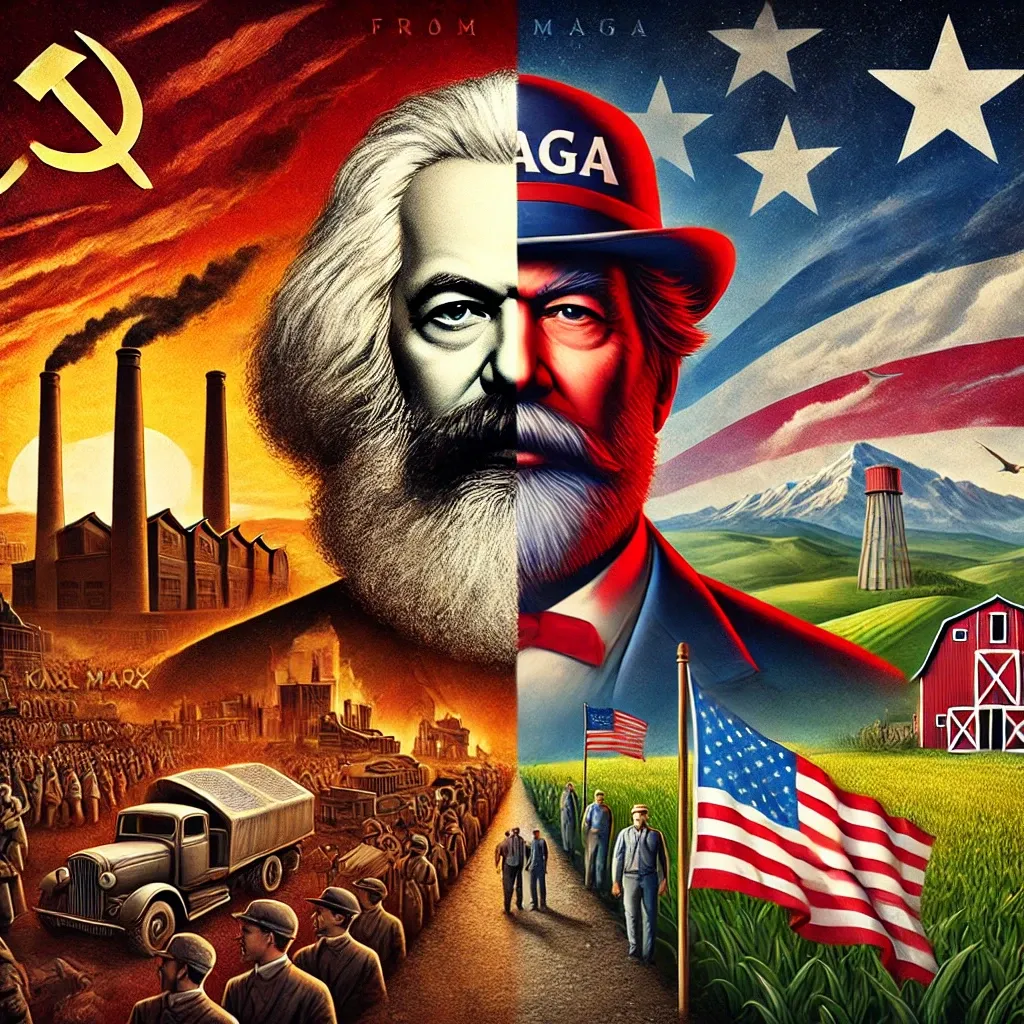

By Dr. Tim Orr
We’re living through the tail end of a cultural revolution that began in the 1970s, particularly in American universities. Back then, the humanities and social sciences were already shifting away from their foundations in critical thinking and respect for Western tradition. Slowly but surely, they became breeding grounds for Marxist ideology and radical societal, cultural, and power theories.
At first, the shift was subtle. Professors began questioning long-held values, replacing the pursuit of objective truth with relativism. Concepts like “privilege,” “systemic oppression,” and “class struggle” moved from fringe discussions to center stage. These theories weren’t just academic exercises—they fundamentally reshaped how students viewed the world.
Most people didn’t notice it happening. The rest of society was busy living, raising families, and working to provide for the next generation. Meanwhile, universities became ideological factories. The students of the 1970s and 1980s became the teachers, journalists, corporate executives, and politicians of the 2000s.
The damage had already spread far beyond campus walls by the time we woke up. Our classrooms, newsrooms, and entertainment industries had been reshaped. People who used to take pride in shared ideals and open debate were now silenced for questioning the approved narrative. If you didn’t fall in line, you were labeled.
From Civil Disagreement to Cultural Warfare
What began as an academic movement grew bigger and more dangerous. Healthy political debate became almost impossible. Instead of seeing opponents as people with different ideas, we started seeing them as enemies—morally corrupt, even evil. That’s how we got here, to a world where every disagreement is a crisis. How else do you explain the leap from “I disagree with Trump” to “Trump is Hitler”?
The cultural rot went unchallenged for decades until Donald Trump entered the picture.
Trump: The Unexpected Response to a Broken System
When Trump was elected in 2016, it wasn’t because he was polished but because he had a perfectly refined vision. He won because millions of Americans saw him as a way to push back. He didn’t speak like a politician. He didn’t play by their rules. And that was exactly what people wanted—someone to break the system that had ignored them for far too long.
Trump was messy, no doubt about it. His rhetoric was often inflammatory, and his inexperience with government was obvious. But here’s the thing: Trump’s policies were strong. While the media was busy amplifying every tweet, his administration was cutting regulations, renegotiating trade deals, and pushing back against globalist policies that hurt working Americans. Trump’s approach was a breath of fresh air compared to Hillary Clinton's agenda.
But he wasn’t perfect. The federal bureaucracy—what some call the “Deep State”—fought him at every turn. Trump underestimated how entrenched and resistant to change the system was. And in 2020, he lost.
Trump the Fighter: Strength Under Fire
Four years later, Trump isn’t the same candidate. He’s taken his lumps, but one thing has become clearer than ever: Trump is a fighter. He has faced relentless opposition—from the media, the bureaucracy, and even from within his party—and he’s still standing.
He’s also survived two assassination attempts. Whether you love or hate him, you must acknowledge the man’s resilience. Most politicians would crumble under that kind of pressure, but Trump has only doubled down on his message. For millions of Americans, this toughness is needed to take on a system that seems immovable.
Trump’s opponents haven’t just targeted him politically. They’ve attacked his family, his businesses, and his character. Yet through all of it, Trump has remained laser-focused on his vision for America. If nothing else, Trump’s perseverance has made it clear: He’s not fighting for himself. He’s fighting for the people who feel abandoned by the political elite.
A Smarter, Sharper Trump: Lessons Learned
Four years later, Trump isn’t the same candidate. He’s taken his lumps but also learned some hard lessons about governance, leadership, and strategy. Here’s how Trump 2.0 is different:
- A Business Mindset for Government
Trump’s strength has always been his business background. Businesses thrive on efficiency, accountability, and results—things the government bureaucracy rarely delivers. This time around, Trump seems laser-focused on results, not incrementalism. He’s doubling down on making government work for the people, not itself. - Assembling a Stronger Team
Trump’s biggest mistake in 2016 was underestimating the importance of personnel. Too many bureaucrats and career politicians undermined his efforts. Now, he’s surrounding himself with reformers—people who share his vision and have the competence to make it happen. - Fighting the Media Monopoly
Legacy media isn’t going to change—that much is clear. But Trump is working to level the playing field. Alternative platforms and independent journalism give Americans access to fairer, more balanced reporting. - Reshaping the GOP into a Working-Class Party
Trump has transformed the Republican Party. It’s no longer the party of country club elites. Today, it’s a coalition of working-class Americans—white, Black, Hispanic, and Asian—who desire economic opportunity, cultural sanity, and national pride. This is a monumental shift in U.S. politics. - Taking a Stand Against the Woke Agenda
Trump’s willingness to confront cultural radicalism is a big part of his appeal. While others shy away from issues like gender ideology, critical race theory, and political correctness, Trump leans in. He’s drawing a line in the sand, saying, “Enough.”
MAGA: A Vision for Renewal
The “Make America Great Again” movement is about more than Trump. It’s about restoring what made this country exceptional: opportunity, responsibility, and shared values. It’s about economic revitalization, secure borders, and an America-first foreign policy.
Critics call it divisive, but that’s because it directly challenges the worldview they’ve spent decades building. For the millions of Americans who support it, MAGA represents hope—a chance to reclaim a nation that feels like it’s slipping away.
What Happens Next?
We’re at a defining moment in our history. The cultural revolution that began in the 1970s has done its damage, but it doesn’t have to have the final say. Trump’s return offers a chance to turn the tide—to rebuild broken institutions, restore accountability, and renew the American spirit.
This isn’t just about Trump. It’s about us. Are we willing to confront the cultural decay? Are we ready to demand more from our leaders, schools, media, and ourselves? Because the next chapter of America’s story is being written right now—and we all have a role to play.
Tim Orr is a scholar of Islam, Evangelical minister, conference speaker, and interfaith consultant with over 30 years of experience in cross-cultural ministry. He holds six degrees, including a master’s in Islamic studies from the Islamic College in London. Tim taught Religious Studies for 15 years at Indiana University Columbus and is now a Congregations and Polarization Project research associate at the Center for the Study of Religion and American Culture at Indiana University Indianapolis. He has spoken at universities, including Oxford University, Imperial College London, the University of Tehran, Islamic College London, and mosques throughout the U.K. His research focuses on American Evangelicalism, Islamic antisemitism, and Islamic feminism, and he has published widely, including articles in Islamic peer-reviewed journals and three books.
Sign up for Dr. Tim Orr's Blog
Dr. Tim Orr isn't just your average academic—he's a passionate advocate for interreligious dialogue, a seasoned academic, and an ordained Evangelical minister with a unique vision.
No spam. Unsubscribe anytime.
